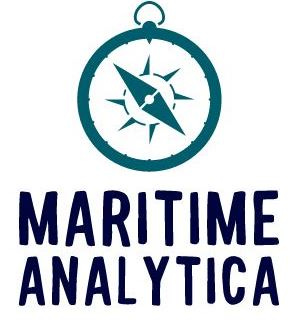🌎 The Maritime Sustainability Edition - 04
Sailing Towards a 🌿 Greener Future in Container Shipping 🚢
Hello, Maritime Mavericks! 🚢🌊
Set Sail for Green Horizons - The Eco-Maritime Experience! ⛵🌎
🌍 Nations Agree: Greener Shipping
💸 UMAS Study: $200 Emission Gap
💡 EU ETS Costs Unveiled
⛴️ Alternative Fuels Surge
🌿 Green Tech in Shipping
🚢 Containers Lead in Fuels
🌊 Emissions to Limestone
🌱 Shipping's Green Fuel Plan
🔓 Biofuel Revolution Unlocked
🛳️ Green Corridors: Zero Emission Routes
Join us on a voyage into sustainable seas, uncovering eco-tech, green shipping, and global initiatives steering container shipping toward a cleaner horizon.
Ready to embark on this green odyssey? Let's ride the eco-waves! 🌊🌿
🚢 Navigating Knowledge: Container Shipping Quiz Time!
Last Edition’s Answer: Modular Container Living Units
1- Nations Agree to Cut Emissions to make Shipping Greener
2- UMAS: $200 Gap for Zero-Emission Shipping per Container
UMAS reveals $150-$450 per TEU cost difference for zero-emission vessels on transpacific routes by 2030.
Total Cost of Operation (TCO) for SZEF vessels could be 2-4 times conventional fuels by 2030, emphasizing early commitments.
Future fuels may cost 2-3 times more. Early adoption by cargo owners is crucial for a zero-emission shipping market.
Discussions stress coordinated efforts for global decarbonization. UNCTAD policy calls for universal regulations and supports a carbon levy.
Shipping leaders call for an end date for fossil-only newbuilds, urging IMO to accelerate the shift to green fuels.
3- Unveiling the True Costs of EU ETS for Shipping via Clarksons
EU ETS to include shipping from January 1.
Vessels visiting EU ports must offset CO2 emissions with EU Allowances.
Estimates show EU ETS costs for VLCCs, MRs, capesizes, and panamaxes.
For a VLCC from Ras Tanura to Rotterdam, costs estimated at $200,000 per voyage in 2023 (4% of today's freight cost).
Anticipated increase to $0.5 million (10% of freight cost) in 2026 when EU ETS is fully phased in at 100%.
4- Alternative Fuels Surge in Shipping Industry via DNV
LNG Momentum: Added 10 LNG-fueled ships to DNV - Maritime's AFI database in October.
Record Deliveries: January witnesses a record number of LNG-fueled ship deliveries.
Methanol Growth: Methanol-fueled ship orders surge with 23 in the container segment.
Ammonia Expansion: Two additional orders contribute to the growing momentum of ammonia as a fuel.
5- Green Technologies in Maritime Logistics & Shipping
6- Container Ships Lead in Alternative Fuels
Methanol leads with 9% of orders, followed by LNG at 7%.
Methanol-fueled ships to double by year-end, mainly in container ships.
LNG dominates with 493 ships in operation and 523 on order.
Over 5,000 ships operate with scrubbers.
Ammonia gains interest with two orders in January.
7- Marine Emissions Transformed into Valuable Limestone
Seabound's carbon capture prototype captures 78% of emissions from cargo ships.
CO2 converted into limestone pebbles, a valuable commodity.
System tested successfully on a medium-sized container ship.
Potential to capture up to 95% of emissions in the future.
Revenue stream from selling limestone offsets operational costs.
8- Shipping Industry Proposes Green Fuel Price Equalization Plan
World Shipping Council proposes Green Balance Mechanism (GBM) to bridge clean fuel price gap.
GBM allocates fees from fossil fuels to green fuels, equalizing average fuel costs.
Higher emission reduction fuels receive greater financial allocation.
IMO would collect a minimum fee to offset price differentials, allocated to ships using green fuels.
Other proposals include a zero-emission shipping fund and a universal mandatory levy on GHG emissions, also up for consideration at next month’s MEPC.
9-Unlocking the Biofuel Revolution for Sustainable Shipping via DNV
DNV assessed global potential supply of sustainable biofuels.
Full decarbonization of shipping by 2050 requires 250 Mtoe of sustainable biofuels annually.
Sustainable and economical potential supply of biofuels by 2050 is estimated at 500–1,300 Mtoe.
Current global production capacity of sustainable biofuels is around 11 Mtoe/year, expected to reach 23 Mtoe/year by 2026.
Major build-up of sustainable biofuel production capacity is needed to reach full biofuel potential.
10- Green Shipping Corridors: Zero-Emission Routes for Sustainable Maritime Transport
Green shipping corridors are zero-emission routes between ports.
They allow carbon-neutral fuels like methanol, ammonia, and hydrogen.
Collaboration among stakeholders is key.
Several corridors are in early planning stages.
Converting plans to reality is a major challenge.
We read your emails, comments, and poll replies daily. Hit reply and let us know what you want more of! - Email: maritime-analytica@outlook.com
Have you missed any past newsletter? Check them out here:
For more daily news, follow up via LinkedIn here:
For more, please complete the form:



